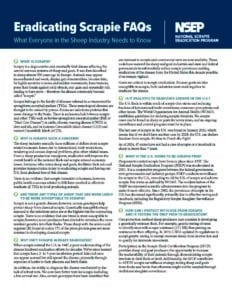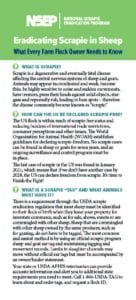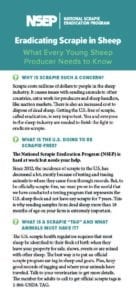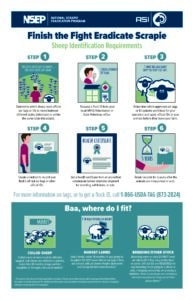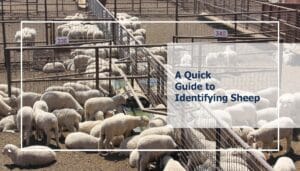What is Scrapie?
Scrapie is a fatal, degenerative disease that affects the central nervous system of sheep and goats. It is classified as a transmissible spongiform encephalopathy.
The presence of classical scrapie in the U.S. sheep and goat population affects the industry economically through production losses, lost exports, and increased production and disposal costs. Public health concerns related to the transmission of bovine spongiform encephalopathy (BSE) to humans have resulted in efforts to eradicate all TSEs in food-producing animals.
Surveillance is conducted through the National Scrapie Eradication Program (NSEP), a cooperative State-Federal-industry program, working to eradicate classical scrapie from the U.S and meet World Organization for Animal Health (WOAH) criteria for disease freedom.



